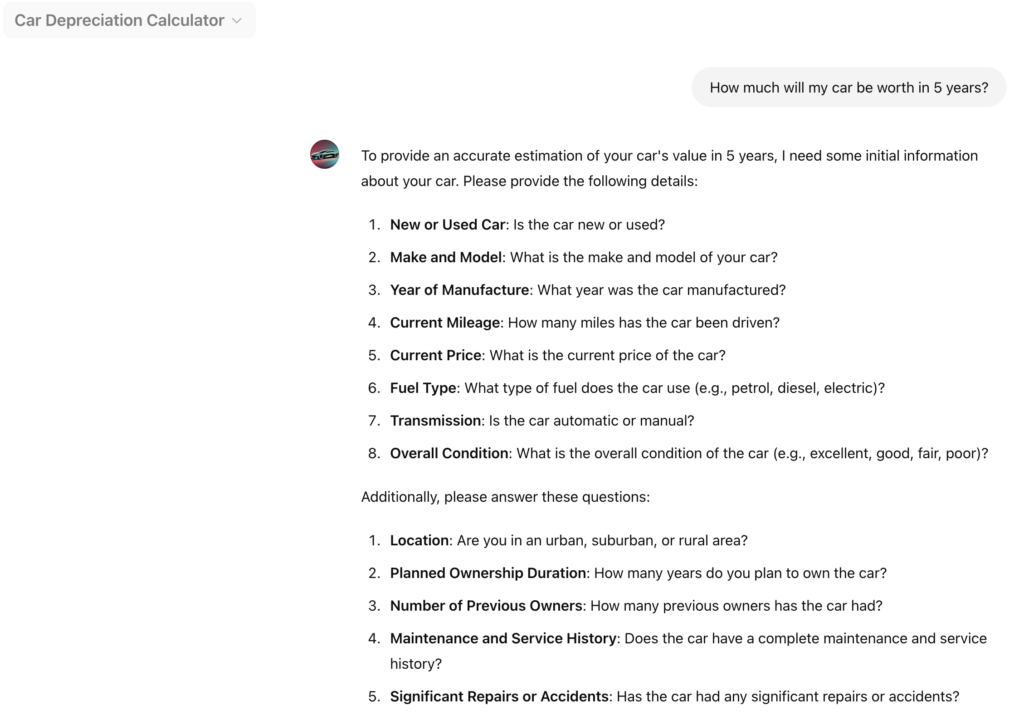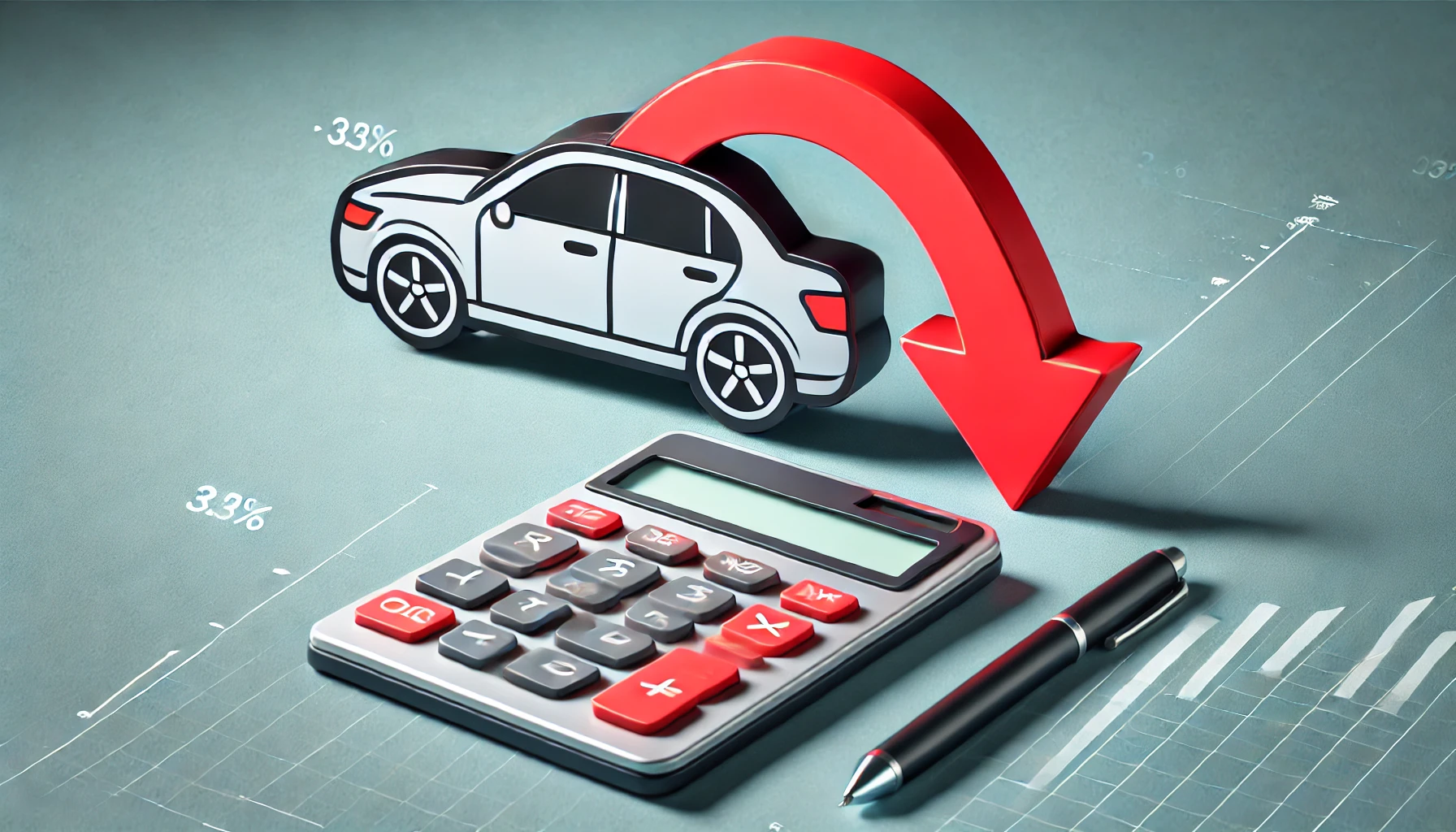Did you know that a new car loses up to 20% of its value as soon as you drive it off the lot? It’s a shocking fact that catches many new car owners by surprise. This immediate drop in value, known as car depreciation, is an unavoidable aspect of car ownership that affects everyone, from first-time buyers to seasoned car enthusiasts.
Understanding car depreciation is crucial for making informed buying decisions. By grasping how and why cars lose their value over time, you can make smarter choices about which car to purchase, when to buy or sell, and how to maintain your vehicle to minimize its depreciation.
What is Car Depreciation?
Definition
Car depreciation is the decline in a vehicle’s value over time. This happens due to factors like wear and tear, mileage, age, and advancements in automotive technology. Essentially, as a car gets older and accumulates miles, it becomes less valuable.
Depreciation Timeline
Car depreciation typically follows a predictable pattern:
- First Year: The most significant drop in value occurs as the car transitions from new to used status.
- Years 2-3: Depreciation slows but remains substantial, with a noticeable decrease in value each year.
- Years 4-5: The depreciation rate steadies, with cars still relatively modern but starting to feel outdated.
- Years 6-10: Depreciation continues at a slower pace, with the car retaining a smaller percentage of its original value.
Impact on Buyers and Sellers
Understanding depreciation is crucial for both car buyers and sellers.
For Buyers
Knowledge of depreciation helps in making informed decisions, choosing cars that hold their value better and negotiating better prices on used cars.
For Sellers
Sellers can set realistic prices for their used cars and time their sales to minimize losses, ensuring competitive pricing and maximizing returns.
Key Factors Influencing Car Depreciation
Age of the Car
The age of a car is a primary factor in its depreciation. New cars experience the most significant drop in value within the first few years. As cars age, they become less desirable due to wear and tear, advancements in newer models, and the perception that older cars are less reliable.
Mileage
Mileage directly impacts a car’s value. Higher mileage typically indicates more wear and tear, leading to greater depreciation. Cars with lower mileage are generally more desirable and maintain their value better.
Make and Model
Different brands and models depreciate at different rates. Cars from brands known for reliability and quality, like Toyota and Honda, tend to depreciate more slowly. Conversely, luxury and high-performance brands often experience faster depreciation due to higher initial costs and more expensive maintenance.
Condition
The physical and mechanical condition of a car significantly affects its depreciation. Well-maintained cars with minimal wear and tear, no significant damage, and a good service history depreciate more slowly. Poor condition can accelerate depreciation dramatically.
Market Demand
Market demand plays a crucial role in car depreciation. Cars that are in high demand tend to hold their value better. Factors like fuel efficiency, popularity of the vehicle type (e.g., SUVs vs. sedans), and regional preferences can influence demand.
Economic Factors
The broader economy affects car depreciation. In a strong economy, car values tend to hold better due to higher consumer confidence and spending power. During economic downturns, car values can drop as consumers become more price-sensitive.
Technological Advancements
Advancements in automotive technology can accelerate depreciation. As new features and improvements become standard in newer models, older cars without these advancements can lose value more quickly. This includes updates in safety features, infotainment systems, and fuel efficiency.
It might be hard to keep all these factors in mind, so we created a chat bot to help you with it! Just start a conversation with the bot, give him a link to a car you are considering to buy or provide answers about your car in a conversational way.

Do not hesitate to send us an email with your feedback!
How to Minimize Car Depreciation
Choose the Right Car
Selecting a car that holds its value well is crucial. Opt for brands known for reliability and low depreciation rates, such as Toyota and Honda. Research models with strong resale values and consider the car’s popularity and market demand in your region.
Maintenance and Care
Regular maintenance and care are vital for minimizing depreciation. Adhere to the manufacturer’s service schedule and keep detailed records of all maintenance and repairs. A well-maintained car with a complete service history is more attractive to buyers and retains its value better.
Mind the Mileage
Keeping your car’s mileage within an acceptable range helps slow depreciation. Avoid unnecessary long trips and use other transportation methods when possible. Consider using a second, lower-value car for daily commutes to preserve the mileage on your primary vehicle.
Avoid Customizations
While personalizing your car can be appealing, customizations can hurt its resale value. Stick to factory options and avoid aftermarket modifications that may not appeal to a broad range of buyers. Customized cars often depreciate faster because they cater to specific tastes and can be harder to sell.
Timing Your Purchase and Sale
Timing your car purchase and sale can significantly impact depreciation losses. Buying a slightly used car, such as a one- or two-year-old model, can help you avoid the steep initial depreciation. When selling, aim to do so before significant model updates or redesigns are announced, as newer models can make your car seem outdated and decrease its value.
Understanding Depreciation Rates by Brand
Overview of Brands with Best Depreciation Rates
Certain brands are renowned for their slow depreciation rates, making them a smart choice for buyers looking to retain value over time. Here are some top performers:
Toyota
Known for exceptional reliability and durability, Toyota vehicles maintain their value well. Models like the Toyota Corolla and Toyota Tacoma consistently rank high in resale value.
Honda
Honda’s reputation for reliability and fuel efficiency helps its models depreciate more slowly. The Honda Civic and Honda CR-V are prime examples of cars with excellent long-term value.
Subaru
With a strong focus on safety and performance, Subaru vehicles like the Subaru Outback and Subaru Forester hold their value well, especially in regions with harsh weather conditions.
Overview of Brands with Fast Depreciation Rates
Luxury and high-performance brands often experience faster depreciation due to higher initial costs and expensive maintenance. Here are some examples:
BMW
Despite being a luxury brand with high initial value, BMWs tend to depreciate quickly. Models like the BMW 7 Series see significant drops in value within the first few years.
Mercedes-Benz
Similar to BMW, Mercedes-Benz vehicles depreciate rapidly. The Mercedes-Benz S-Class, for instance, loses value quickly due to high ownership costs and rapid advancements in technology.
Jaguar
Known for their performance and luxury, Jaguar cars also face steep depreciation. The Jaguar XF is an example of a model that sees a substantial decline in value over a short period.
Case Studies
Toyota Camry vs. BMW 3 Series
Toyota Camry
A 5-year-old Toyota Camry retains about 60% of its original value. Its reputation for reliability and low maintenance costs contribute to its strong resale value.
BMW 3 Series
In contrast, a 5-year-old BMW 3 Series retains about 40% of its original value. The high cost of ownership and frequent model updates accelerate its depreciation.
Honda CR-V vs. Mercedes-Benz GLE
Honda CR-V
A Honda CR-V typically retains around 65% of its value after 5 years. Its popularity, fuel efficiency, and reliability make it a desirable option in the used car market.
Mercedes-Benz GLE
The Mercedes-Benz GLE retains approximately 45% of its value after 5 years. Luxury features and high initial costs contribute to its rapid depreciation.
Subaru Outback vs. Jaguar XF
Subaru Outback
The Subaru Outback maintains about 62% of its value after 5 years. Its strong performance in various weather conditions and safety features make it a sought-after used car.
Jaguar XF
Conversely, the Jaguar XF retains only around 35% of its value after 5 years. High maintenance costs and a smaller buyer pool lead to faster depreciation.
The Role of Inflation and Economic Conditions
Inflation Impact
Imagine you’re planning to buy a car. Suddenly, inflation spikes, and everything costs more. This means:
- Higher Prices: New cars become more expensive, and so do used cars, because everyone is trying to save money.
- Ownership Costs: Maintaining your car also gets pricier. Repairs, parts, and fuel all go up, making people think twice about buying.
- Loan Costs: With inflation, interest rates rise, making car loans more expensive. Fewer people take out loans, reducing demand for cars and increasing depreciation.
Economic Trends
Now, picture how the economy affects car values:
- Economic Health: When the economy is strong, people buy more cars, keeping values high. In tough times, they hold off on big purchases, causing car values to drop faster.
- Job Market: High unemployment means fewer car buyers. Cars sit on lots longer, depreciating quickly.
- Supply and Demand: In a booming economy, more new cars flood the market, increasing used car supply and depreciation. In a downturn, fewer new cars are made, boosting used car values.
- Fuel Prices: High fuel prices make fuel-efficient cars more desirable, retaining their value better. Gas-guzzlers, however, depreciate faster.
Conclusion
Understanding car depreciation is essential for making savvy financial decisions when buying or selling a vehicle. By considering the various factors that impact a car’s value, you can ensure you get the best deal and maintain your vehicle’s worth for longer.
To make calculating car depreciation even easier, try using our custom GPT tool. It can provide accurate depreciation estimates, helping you make informed decisions. Use these insights and tools to maximize your car’s value in your next purchase or sale.
